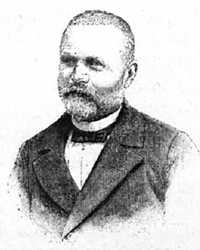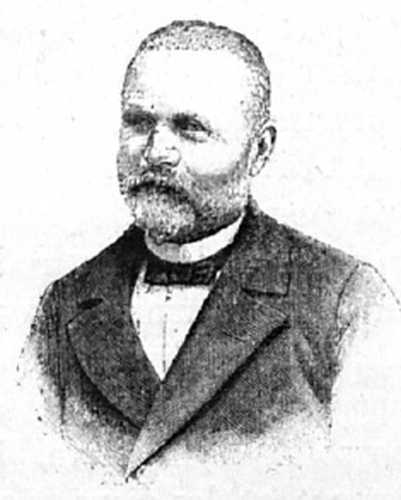
Jean Compagnon
Biography
Jean Compagnon was head of department in the Eiffel establishments. A trusted man of Gustave Eiffel himself, he was in charge of assembling numerous constructions from the company's workshops. He was head of the assembly department of the Eiffel Tower.
Mr. Jean Compagnon was born in Reyrieux, near Trévoux (Ain), in 1838. He is a workman son of his works. After a three year apprenticeship as a carpenter, he left his native country in 1855 to come to Paris, to see the World Expo, and worked with various structural contractors, attending the evening the adult school at the Conservatory of Arts and Crafts, to improve, for three consecutive years.
In 1859, he was a carpenter team leader at the viaduct of Vincennes, when he met the director of the metal bridges works that the Gouin house built on this line. He then embarked at Dunkirk to go to Russia, on the line from St. Petersburg to Warsaw, to work on the construction of various metal bridges at Rôjitza, Dunabourg, and Wilna, & c. Returning to France in 1863, he married his cousin and returned to Villarénl de Zumarogua in Spain in 1864 as head of the workshop for the construction of the railway crossing the Pyrenees.
In 1865, he went to Italy as foreman and foreman, responsible for the construction of the bridges of Merzana-Corti, on the Po, on the Adda, in Pizighetonne near Cremona, and in Italy south on the line from Foggia to Naples, to Ariano. In 1869 he left for Russia, as chief foreman carpenter for the erection and construction of a large bridge over the Volga near Rybinsk and various other small bridges on the line of Rybinsk to Bologoé. New return to France, in 1871, and new start, in 1872, in Budapest, in Hungary, for the construction of the Marguerite bridge on the Danube.
In 1876, on behalf of the G. Eiffel House, Mr. Compagnon went to Porto, Portugal, as chief editor of the Maria Pia bridge, which has an arc of 160 meters of rope over 60 meters high; at the end of this work, he climbed the bridges of Tamiga and Villamca, on the Douro line. Returned to France in 1878, he climbed the bridges of Empalot, Valentine and Sarrieu on the Garonne, and became, in 1889, head of the G. Eiffel department, he began the installation of the viaduct of Garabit (Cantal) then the Cubzac road bridge, the installation and the language of the deck on each bank. In 1882, he left for Szegedin (Hungary) to erect the Szegedin road bridge, including a span of 110 meters of rope, cantilevered on the Theissa. In 1883, return to Garabit (Cantal) for the assembly of the arch of 165 meters on 124 meters of height, until 1884. In 1885, assembly of the viaduct of the Tardes (Creuse), height 92 meters, language of a span of 104m50 without supports between the masonry piles. From May 1885 to the end of 1886, erection of various bridges at Roc-Saint-André (Morbihan), Moranne-sur-Sarthe, on the line from Caen to Saint-Lô, to Evreux, etc. From January 1887 to September 1887, assembly of the bridge of Collonges-sur-Saone and Montélimar, on Rou-bion. Since then, he has been responsible for editing the Eiffel Tower in the Champ de Mars.
We have cited all these works to highlight all that the will and intelligence can have in a French worker. Mr. Compagnon was promoted to Knight of the Legion of Honor on May 6, 1889.
See also:





















